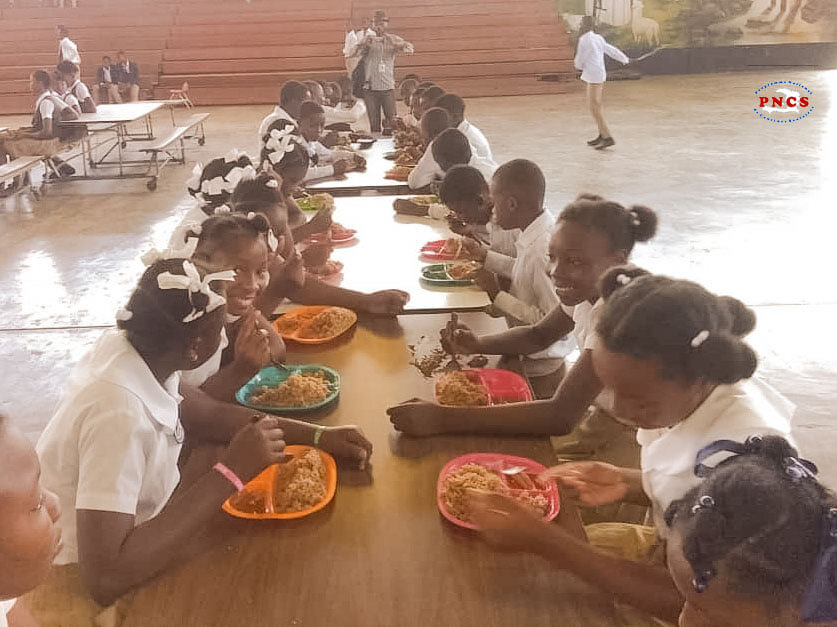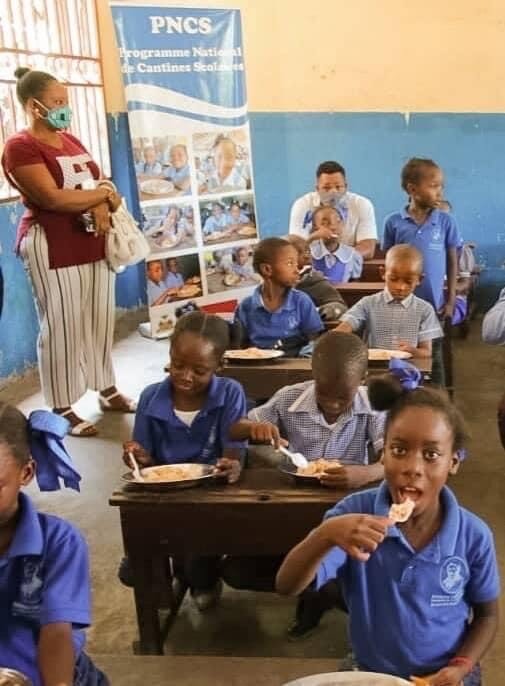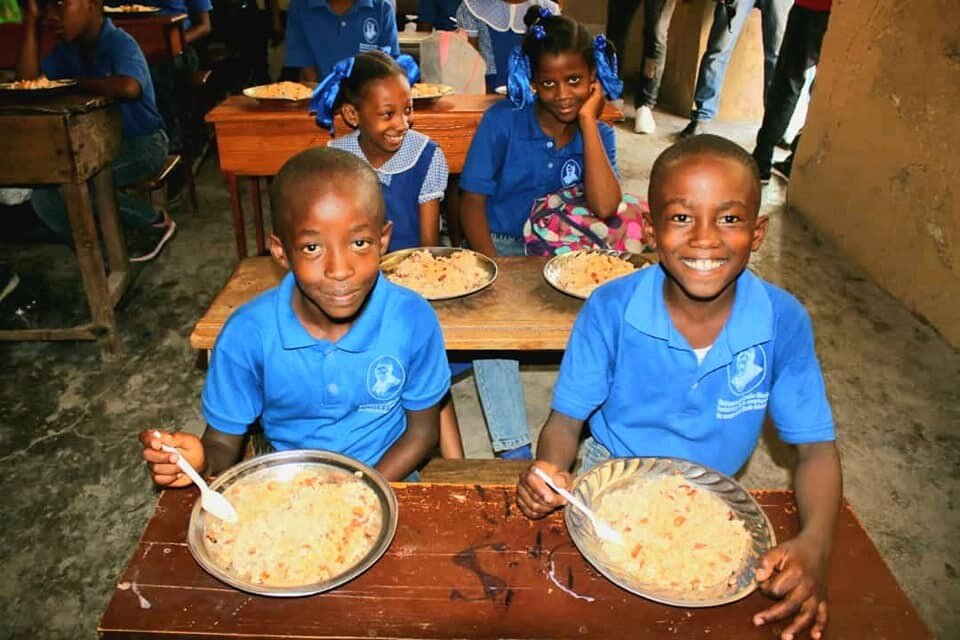PORT AU PRINCE, OCTOBER 11, 2021 (MIC) -
Though there has been an upsurge in new cases since the end of September, together with a spike in deaths, Haiti continued to record relatively low numbers when set against its neighbours in the Dominican Republic and the rest of the Caribbean.
As at October 1, the official results of COVID-19 were as follows: The number of suspected cases is 123,092, 81 new cases, 22,354 confirmed cases, 1,923 active cases, 19,797 patients cured, 634 deaths.
For the vaccination campaign launched in July 2021, the latest figures are 52,447 people received the first dose of Moderna, 22,432 received both doses of Moderna and 341 received Johnson and Johnson. The number of people who are fully vaccinated 22,773.
For the time being, the only vaccine used in Haiti is Moderna.
The Haitian government has had to delay the arrival of other vaccines from the COVAX programme because it wants to first administer the 500,000 doses of Moderna which are due to expire on November 6, 2021.
Pfizer, AstraZeneca, Johnson and Johnson (Janssen) vaccines are then expected to become available in Haiti by December. There are 113 vaccination sites nationally. So far it has been observed that mainly the people of the middle class are more willing to get the vaccine. Approximately 60,000 doses have been used.
Food nutrition
Nearly a million people are at risk of starving to death this winter in Haiti, according to a September 9 estimate of the UN Food and Agriculture Organization (FAO).
In the south of Haiti, at the epicentre of the August 14 earthquake, 980,000 people are expected to suffer from severe food insecurity between September and February 2022, including 320,000 during the current emergency phase.
The FAO is trying to raise US$20 million as part of a rescue effort. This money will help rebuild damaged infrastructure including irrigation canals, fruit processing factories, dairies, fish outlets, distribution of seeds, agricultural equipment and livestock, before the start of the next agricultural season in October.
In the other departments of North, Centre and West Haiti, the situation is no different. International and national agencies had already issued food shortage alerts since last year.
According to the June 2021 report of the World Food Program (WFP), the country has one of the highest levels of chronic food insecurity in the world with more than half of its total population chronically food insecure and 22% of children chronically malnourished. Underlying drivers of this situation include extreme poverty and frequent natural disasters.
On the 2020 Climate Risk Index, Haiti is also third among the countries most affected by severe weather events.
On February 26, five memoranda of understanding were signed to strengthen resilience and improve the food and nutritional security of the Haitian population. These include projects that will be financed by FAO’s own funds in the amount of US$2.15 million within the framework of the activities of its Technical Cooperation Program.
FAO representative José Luis Fernández, declared at the time that “the problem of hunger and food insecurity constitutes a major challenge that the Government and development actors must face.” He also pointed out that extreme weather events, socio-political unrest and structural weaknesses have contributed to the deterioration of the livelihoods of the most vulnerable.
A document published by the FEWS (Famine Early Warning System Network) on the situation in Haiti, noted that the exchange rate against the US$ has appreciated considerably since December 2020 reaching around 75 gourdes per US$ on the formal market and up to 95 gourdes on the informal market.
This occurred despite the injection of US$12 million in the banking sector in January.
This situation has led to an increase in the prices of both imported and local products. Food price increases also remain above the five-year average of over 40%.
Restrictive measures to fight COVID-19, including closure of the land border on both sides of the Haitian/Dominican border, have also had negative impacts on the availability of a number of food products in Haiti. These include flour, edible oil, condiments, eggs, and sugar. There have also been heavy limitations on trade between the two countries.
Food security conditions continue to suffer from the residual effects of the decapitalisation of farms, the socio-political crisis, and measures attached to the pandemic.
The new wave of COVID-19 affecting the major world economies, in particular the United States, the Dominican Republic, Chile, and Brazil, is further amplifying the economic recession in these two countries. This is already having a negative impact on the rate of flow and volume of migrant remittances to Haiti and, resultantly, the purchasing power of households.
Currently, following the earthquake in southern Haiti, the percentage of the Haitian population requiring food assistance has increased from 10% to 50%, with a concentration in the south of the country. This requires increased levels of food aid, including seeds and livestock aid.
The 7.2 August 14 earthquake followed shortly after by Tropical Storm Grace significantly affected food production and habitats in the departments of Sud, Grande Anse and Nippes.
The following impacts were recorded: 2,207 dead, 137,000 houses destroyed and significant damage to plantations in many areas, seriously affecting upcoming harvests.
Stocks have been destroyed, and trade in food products halted, in the process reducing the quantity of local products available in public markets and considerably increasing the prices of available products.
In addition, the activities of many small and micro businesses have been suspended. For example, the manufacture and sale of charcoal, small trades and other entrepreneurial activities have been seriously affected.
Additionally, public transport to certain localities where the earthquake caused landslides and cracks in the roadway, has remained a serious issue.
Economic indicators
The Haitian Institute of Statistics and Informatics (IHSI) has noted a negative annual variation of - 4.5% for the agricultural sector.
In the second quarter of the 2020-2021 fiscal year, the contribution of sectors that directly affect the underprivileged to the Economic Activity Indicator (ICAE) all show negative results: Agriculture (- 0.69%), Construction (- 0.41 %), Extractive Activities (- 0.04%). These indicators have tragic implications for the poor.
The Agriculture Branch of the IHSI in the three months (January to March) of fiscal year 2021 registered a drop in production of 4.5% in the current year after recording a decline of 6.9% over the same period last year.
According to the IHSI, in the area of trade, the cumulative annual change for the two quarters from October to March 2021 registered a drop 3.7%, compared to the same period of fiscal year 2020, where it declined 6.1%.
The commercial sector however grew by 1.9%, during the second quarter of the fiscal year 2020-2021. There was a decline in formal trade (- 3.2%) but growth of 5.4% in the informal sector.
In cumulative terms, trade grew by 1.8% over the period October 2020 to March 2021 compared to the first six months of the last fiscal year.
This may explain a relatively modest revival of trade following last year’s pandemic lockdowns. Some observers believe there are grounds for cautious optimism despite the appearance of the Delta, Brazilian, or South African variants of the COVID-19 virus.
It should be noted that in January 2020, the rate of inflation in Haiti was 20.7%. Six months after the discovery of the first case of COVID-19, it rose to 27.8% in August 2020. Since July 2021, it has fallen back to 12.2%.
It should be noted that food and non-alcoholic drinks accounted for 48.50% of household expenditure in July 2021.
Traditionally, this combination of consumables constitutes the dominant element of household expenditure, always positioning between 40 and 50%. Food is therefore at the heart of Haitians’ concerns.
Food prices
In April, significant food price increases were recorded. Nationally, the price of vegetable oil rose by 10%, wheat flour (5%) and rice (3%). These impacts were however unevenly distributed throughout the country.
For example, the price of vegetable oil increased in the Fonds-des- Nègres (42%), in Jacmel (15%), Jérémie (13%) and Hinche, Port-de-Paix (8%). Flour also rose in the markets of Fond-des-Nègres (32%), Cap-Haitien (29%), Cayes and Jacmel (17%).
The average nominal cost of the food basket in April 2021 is around 2,112 gourdes per person per month or 10,560 gourdes for a family of 5 people against 2,057 gourdes in March 2021 and 1,607 gourdes in April 2021.
This represents an increase by 3% compared to March and shows a rise of more than 13% compared to February 2021. Year-on-year, the cost of the food basket increased by 2%. This increase is explained by the depreciation of the gourde against the US dollar and the successive poor performance of crop yields.
Fond-des-Nègres, Port-de-Paix, Jacmel and Cap-Haitien, are the most heavily affected by this increase. This is mainly due to the rise in the prices of vegetable oil, flour, imported rice, creamed sugar and beans.
Fisheries
Rodney Brutus, president of the North Fishermen’s Association (Association des Pêcheurs Nord) said in an interview with MIC that the fishing industry is “infected” with the epidemic due to the absence of tourists who consume a lot of seafood.
The high demand associated with the sector helps increase the price of seafood products. Most important, Brutus said, is the impact of COVID-19 on eel fishing. This relatively new area is said to be very helpful for fishermen to send their children to school.
“We used to sell a kilo of eels at 30,000 gourds. Today, they just offer 10,000 gourdes for a kilo. Eel fishing brought in a lot. In one evening, a fisherman could make 10,000 to 15,000 gourdes,” said Brutus
Eel fishing became popular after it was noticed that they were plentiful in the river mouths of Haiti and capable of being raised in ponds. There is a high demand in Chinese and other Asian markets.
A decline in tourist arrivals and disruptions in global distribution systems have however seriously affected the industry. With the resulting reduction in income and increase in food prices, fishermen are experiencing a sharp deterioration in their living conditions.
Our interview with Rodney Brutus, president of the "Association des pêcheurs du Nord", on the impact of COVID-19 on the fishing sector in Haiti (Cyrus Sibert for MIC):
Food aid
WFP plans to support 215,000 people in urgent need of food aid in the departments of Sud, Grand'Anse and Nippes, the most affected areas; an increase from the 138,000 people who were receiving assistance before the earthquake.
WFP provided emergency assistance for 69,630 households (348,150 people) across 10 departments in Haiti. Approximately USD$5.6 million in cash-based transfers (CBT) and 584 metric tonnes of food were distributed with funding from the Canadian Government, ECHO, the Haitian Government (funded through the Inter-American Development Bank and World Bank), LDS Charities, the Swiss Government and USAID.
Cash distributions implemented on the island of Ile de la Tortue took place for approximately 11,000 people, with the support of the United Nations Humanitarian Air Service (UNHAS); Meals and CSB (Super Cereal, a fortified blended food) to 3,000 displaced people in Delmas and Carrefour, following gang violence in these urban areas in Port-au-Prince.
WFP also provided daily meals for 261,260 schoolchildren (129,395 girls and 131,865 boys); a total of 345 metric tons of food was distributed to 1,436 schools.
The FNE (National Education Fund) contributed to the overall effort by assisting the National School Canteens Program (PNCS) to feed 15,000 children in the Northwestern Department during the 2021-2022 school year. This is aimed at promoting school attendance and discouraging dropouts in rural schools,
Nearly 25,000 students have already benefited from this support during the 2020-2021 school year in the Nord-Est department.
The National School Canteens Program (PNCS) meanwhile does not have sufficient resources to bring food to all the students spread across the country.
Out of a total of 2.8 million schoolchildren to be covered, the PNCS, with the support of its associates, wishes to be able to reach only 50%, with a concentration on the south of the country affected by the earthquake of August 14.
School children of Grand’Anse at school canteen.
According to a report of the activities presented, 94,891 schoolchildren benefited from the PNCS programs from March to July 2021, i.e., the last semester of the 2020-2021 school year.
The existence of a large number of foundations, NGOs and evangelical missions which have their own school canteen programmes in their private schools should be noted. The private schools sector represents more than the majority of the education sector in Haiti.
Anne Marie Dembele, a nutrition specialist for UNICEF in Haiti, has been quoted as saying the country’s turmoil has led families to reduce both the quality and quantity of food they are consuming. This means, among other things, that children have even more difficulty accessing appropriate diets. This makes school canteens important to help children get the recommended daily caloric intake.
A swathe of other overseas-assisted projects totalling US$23 million are also planned to help the agricultural sector recover with a focus on making more food available to the population.
The Government of Haiti and the International Fund for Agricultural Development of the United Nations (IFAD) have signed a financing agreement for a project that will help Haitian farmers recover from the impact of COVID-19 and increase staple food production.
The project will kickstart rapid recovery of agricultural production and incomes by rehabilitating small-scale irrigation systems - a basic necessity in a country badly hit by climate change - provide essential agricultural inputs and help increase farmers’ resilience.
An Emergency Project for Strengthening the Resilience of Small Farmers to the Consequences of the COVID-19 Pandemic (PURRACO, by its French acronym) is a US$5.8 million project ($ 5million from IFAD; $ 0.5 million from the Haitian Government and a beneficiaries’ in-kind contribution of $ 0.3 million). It will benefit 3,250 poor rural households (around 13,000 people, half of whom will be women and 30 per cent youth).
The World Bank has also allocated US$9.5 million to provide immediate funding for Haiti’s agriculture sector to support food security in the context of the pandemic.
“The local agriculture sector supplies up to 45% of Haitian food needs. Safeguarding agriculture will be essential to mitigating the impacts of this crisis, particularly for the rural poor,” said Anabela Abreu, World Bank Country Director for Haiti.
The World Bank has also approved additional funding in the amount of $7.75 million for a project on “Resilient Productive Territories in Haiti” which aims to encourage the adoption of agricultural practices and more resilient land use planning.




Aucun commentaire:
Enregistrer un commentaire